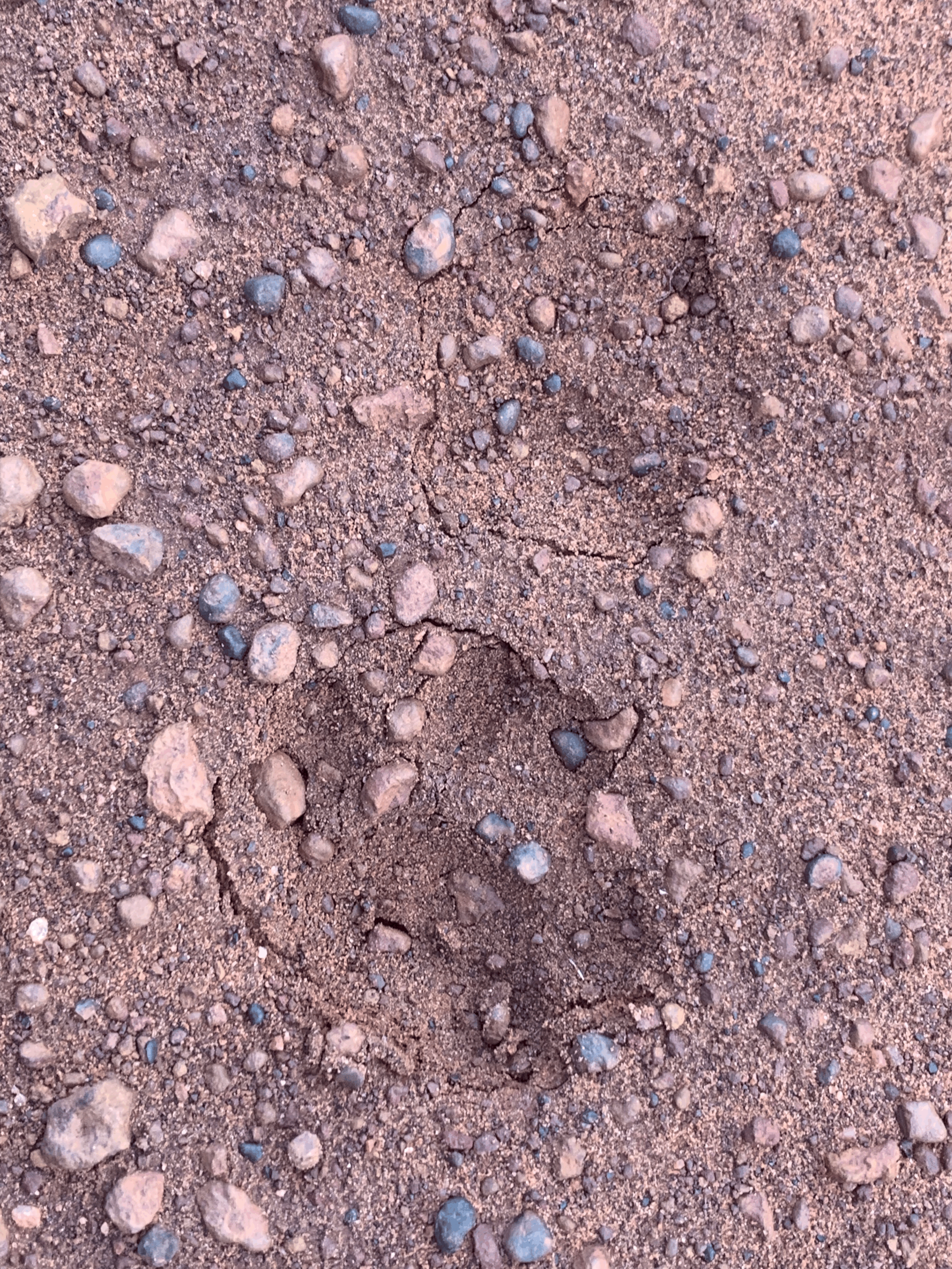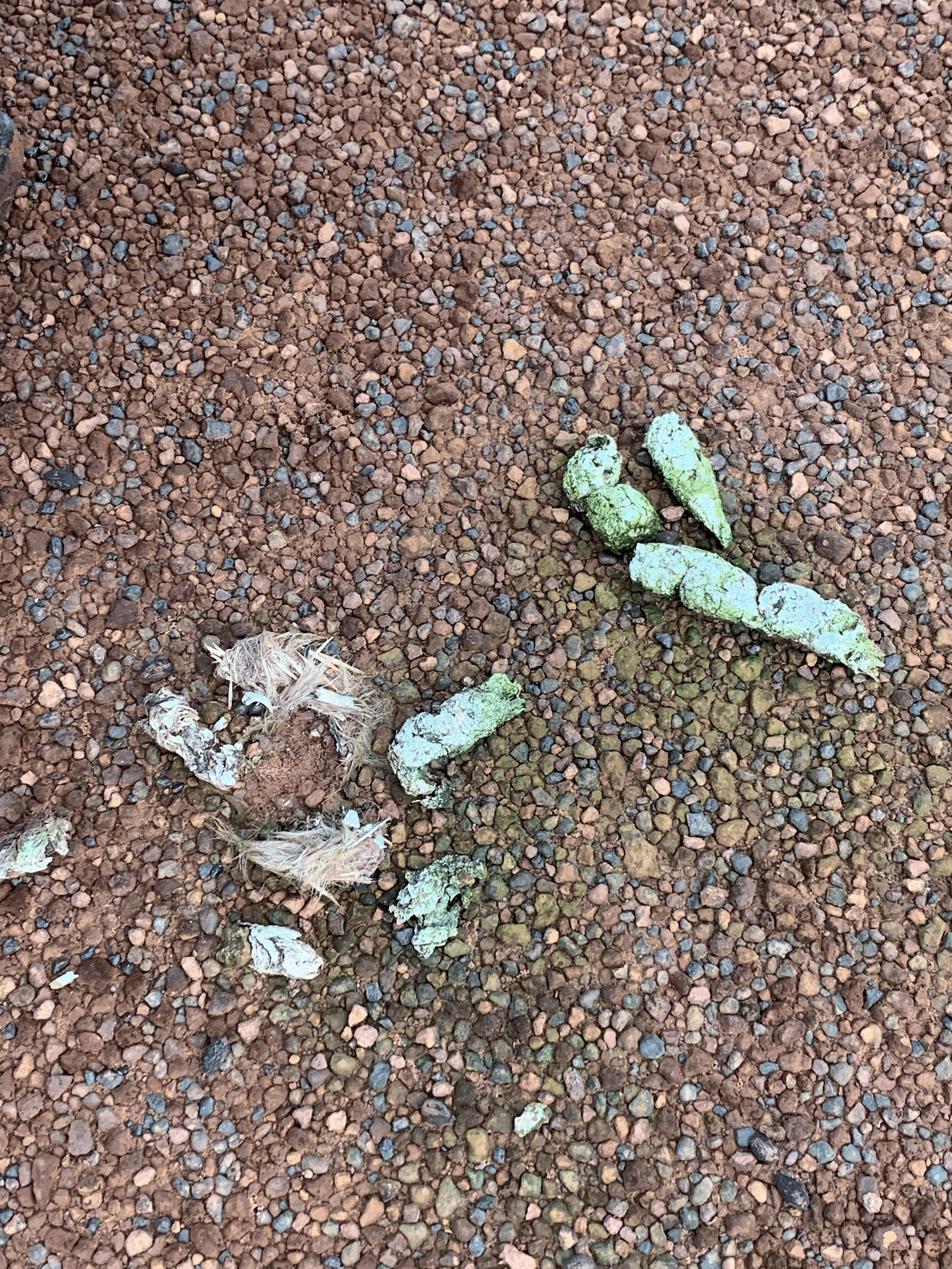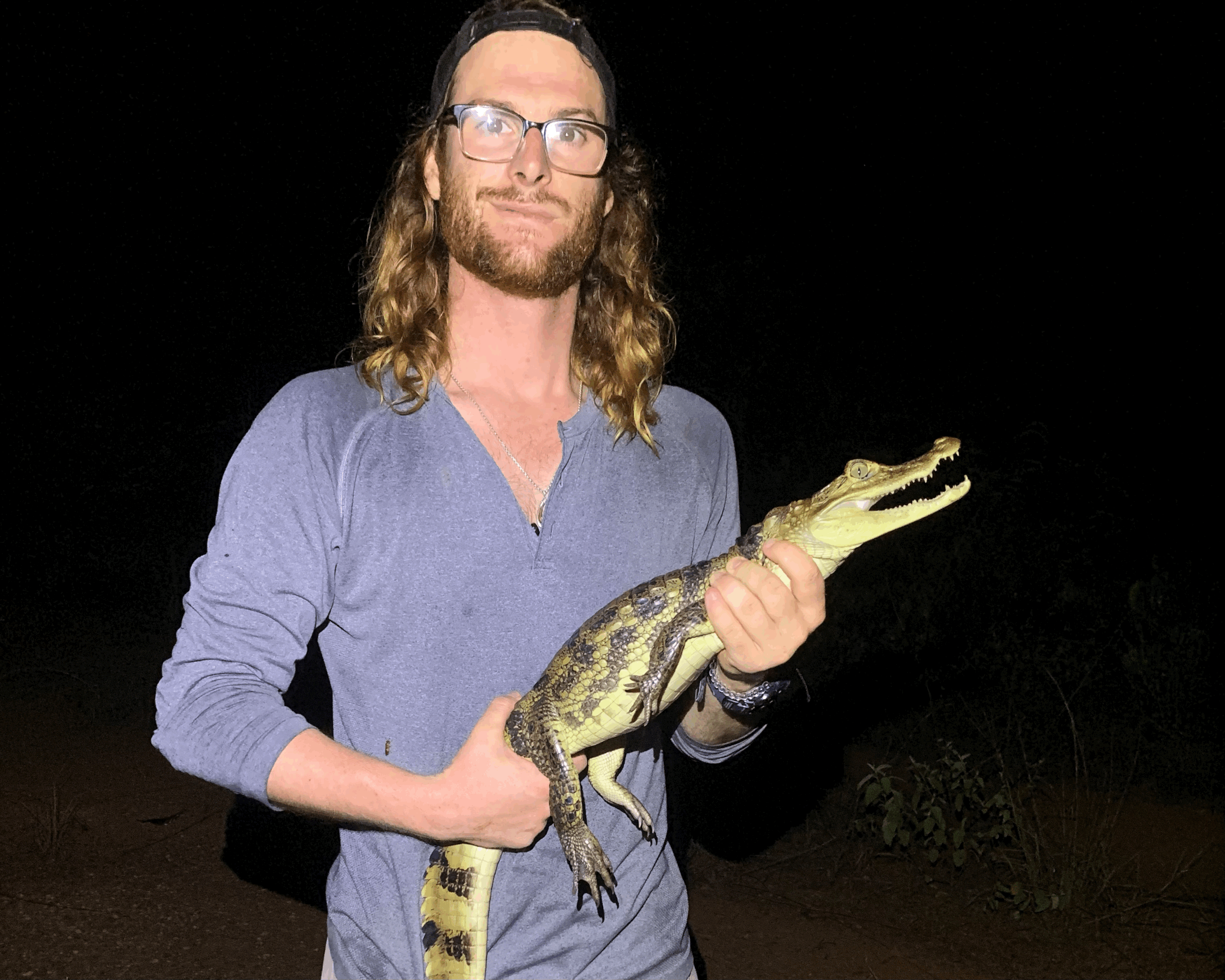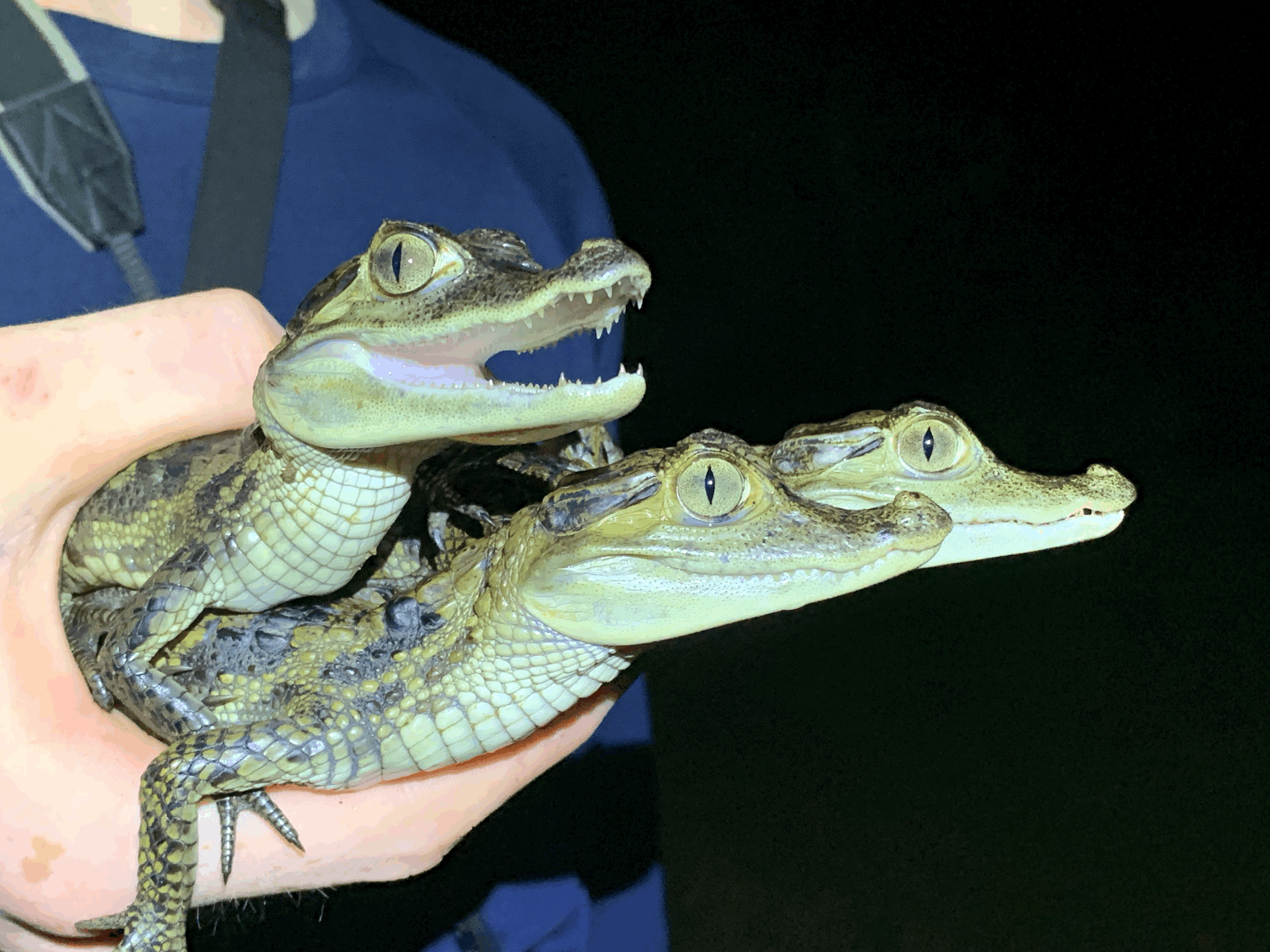High In The Tree Tops of Canopy Walkway, Guyana Week 3
Day 15
We packed up early for the boat ride to Surama, where we would crash for the night and then head to Canopy Walkway, where we will spend the next five nights. I am pretty excited as this area has a lot of forest, and it was where they found a beautiful emerald tree boa last year. The boat ride was uneventful, but we did manage to spot four gorgeous king vultures riding the thermals high in the sky. We got to Surama around 2 pm and relaxed the rest of the day.
Bromeliad
King Vulture
That evening the stars were amazing because it is very clear in the Savannah plains. Found a bunch of large fruit bats going to town on this one tree. I tried to get some photos, but it didn't work out. I played around a bit with my settings but was getting destroyed by biting insects, so I joined the rest of the group at the bar area to chat.
Day 16
Today we headed to Canopy Walkway, which is about an hour and a half away from Surama. We took the big military truck this time, and I sat upfront. I did not see much, but I saw a long-tailed weasel cross the road, which was a new mammal species for me.
We got to Canopy Walkway, and it was stunning. Nice open area to view birds and such at the lodge there. We set up hammocks and had lunch. There are lots of hummingbirds around this area and to my surprise my first time to see a coquette.
Sapphire Species
Sapphire species
Hermit Species
Tuffed Coquette
Guianan toucanet
Black Curassow
Colubrid Species
That night I wanted to walk the main road that connects Georgetown to the rest of the areas in Guyana. Large roads can be good for spotting all sorts of wildlife, so we headed out and went looking for some snakes. In my mind, I am always searching for an anaconda, and after talking to the lead ornithologist brain today, he saw a good-sized one, so I was very keen to explore. Right off the bat, we spotted a kinkajou foraging about in a tree. At first glance, someone would say it is a type of monkey, but they are a type of raccoon. We spotted the common Leptodactylus type of frogs all along the road, a kind of Ranidae, which are the true frogs.
After walking along a good bit, I spotted a pair of caiman eyes and quickly went to investigate. Getting closer, I looked for the facial markings and quickly ID'd it as a dwarf caiman. It was a tiny juvenile, so I grabbed it, and gosh, baby crocodilians are the cutest babies on the planet! This is mainly due to the fact they act like they are huge and menacing.
Schneiders Dwarf Caiman
We put this little guy in the bag to calm him down to take it back for processing. We then continued down the road spotting some bird species and other animals of the night. Our new medic spotted a snake, so I quickly ran back to see what species it was since I was walking on the opposite side. It turned out to be a juvenile yellow phase amazon tree boa which I was very keen to photograph. We took it back for processing as well.
Amazon Tree Boa
We then turned around as we saw lightning in the distance and did not want to get caught in a deluge. Crossing a bridge, we spotted a snake that mimics a coral snake. We then headed back for the night.
Day 17
Today was a laid-back day, and we photographed and processed the animals I grabbed last night. I always release the animals I catch within twenty-four hours to the same general area where they were caught. Canopy Walkway is a destination for world travelers and others looking for wildlife, not just us, so I did a little snake education with some visitors in hopes of changing the common perception that snakes are evil. That evening I photographed the animals and then released them.
Schneiders Dwarf Caiman
That night I walked into the forest and looked for wildlife there. On the walk, we found fresh jaguar tracks and jaguar poo.
Found a fer de lance and another false coral snake, along with some frog species. After finishing the loop, I returned to head out to the road and see if I could spot anything. I spotted some caiman eyes and investigated my third species of a caiman on this trip. The caiman was a speckled caiman that I have seen before in Peru, but this one looked to be under a meter long. I used my noose, put it around the caiman's head, and got it to land where it is easier and safer to work with. We headed back to camp after that to show everyone this extraordinary animal. After getting some photos and processing the caiman, I headed back to where I caught it and released it that night.
Spectacled Caiman
We came back, and I hung out chatting with random people, and then the bat team came back looking thrilled. It turns out they caught a vampire bat. The vampire bat was a highlight for me as I have always wanted to see one.
Vampire Bat
Day 18
I relaxed today as I planned on doing a long hike in the night but visited the walkway that afternoon. It was very gloomy, and not many birds were moving about. We had an interesting species of spider in the big net that a student had found on his hammock. This spider mimics an ant. It uses this disguise to ambush and eats ants.
Ant Mimic Spider
That night we made our big loop, and it was very caiman heavy. After spotting two decently sized ones around five-six feet long, we continued searching. There are many swampy areas on the road as this is the wet season, so we are looking in the water for signs of an anaconda. We then came to this shallow spot, and I spotted little glowing eyes, and it turned out to be a beautiful little spectacled caiman. I then spotted another and another. I saw five in total but only caught three, and since I spotted mom out in the swamp and did not want to take the little ones back, we photographed and processed them there.
Spectacled Caiman
We then spotted one of the most enormous cane toads I have ever seen. This thing was basketball-sized. Cane toads are pretty cool. Here they are native and not a nuisance like in Australia, where farmers brought them in to control a beetle problem. They have large poison sacks right behind their eyes that can cause severe pain and potential death for a predator.
Cane Toad
We continued our hike and then turned around. While we were walking back, a student spotted some caiman's eyes and turned out it was a medium-sized dwarf but what was most fascinating about it was that I reckoned it was the other species of caiman. Both species live in the same area here in Guyana, so it is possible. I brought him back for processing and photo and went to bed.
Cuviers Dwarf Caiman
Day 19
I woke up this morning and immediately went into processing the caiman. From the data that we collected here, we believe this is Paleosuchus palpebrosus and not the triganatus, which we caught earlier on in the trip, and believe the baby we caught was also triganatus.
Schneiders Dwarf Caiman
At 10 am, a group of people and I headed off to see the waterfall. I have always wanted to try and take those gorgeous long water streak photos you see of falls. After playing around with my settings, I finally got that nice wispy look that you can get while photographing long exposure style. After a good rainfall the other day, it was rushing. There were some very beautiful crab species colored with lots of reds and purples.
That afternoon was pretty relaxed because later, I was going road cruising on a bike with a guide to see if we can see if any snakes are crossing the road in the evening. I did photograph a couple of guyanese aracaris which greeted us at the lodge. The ride started out very nicely. We are seeing lots of animals setting up for the night. Spider monkeys, macaws, and raptors were all out and about. A man passed us with a yellow-footed tortoise strapped to his bike. Tortoise is one of the most sought out bush meats in Guyana. Unfortunately, they are effortless to catch and do not put up a fight. Our bike was not very powerful in low gear, and this would become an issue later.
The light started to get low, and we headed out about two hours from the lodge area where we were camping. We waited for a bit to look for tracks, and then we set out again to road cruise. The bike started to fail on us and not give any power. Going up hills and flat areas become impossible, and we began to walk. We were about twelve kilometers from the place we needed to go to. We spent the next three hours pushing the bike on and off, which was grueling. I did see a new snake species, though, which was great but did not bring it back as we saw it super early on the trip. We also spotted a DOA (dead on arrival) amphisbaena, an incredible legless lizard species. I was so tired that night that when we got back, I passed out.
Amphisbaena
Day 20
Today was a relaxing day and our last at Canopy Walkway. I decided to spend the afternoon at the walkway searching for the elusive harpy eagle. I did not see much, but there was this amazing species of trap-jaw ant in the canopy. Of course, I didn't have my macro lens at the time, so I didn't get the best picture, but it was fun to watch these curious ants.
Yellow Headed Vulture
That night we went on a walk to the waterfall area, and it was beautiful seeing it at night. We did not see much wildlife because there was a significant rainfall which typically makes everything go into hiding.









































